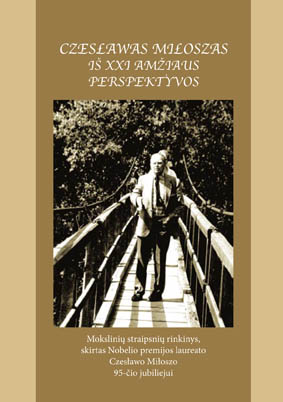The Interpretation of Identification Problem of Appellative and Individual Objects in Cz. Miłosz’s Creative Works
The Interpretation of Identification Problem of Appellative and Individual Objects in Cz. Miłosz’s Creative Works
Author(s): Elena BrazgovskayaSubject(s): Literary Texts
Published by: Vytauto Didžiojo Universitetas
Keywords: Czesław Miłosz; konferencija; conference; Kaunas
Summary/Abstract: This article presents the attitude of famous polish poet Czesław Miłosz towards two polar semiotic conceptions of representation – general and individual naming. The following issues have been analyzed in the text: the relations between language, reality, cultural universe (medieval philosophy studies) and representation. From our point of view, the problem of naming has to be studied in multidisciplinary context of semiotics, linguistics, logic, philosophy and even artistic (fiction) discourse. The semantic function of verbal signs results from their substitutive character – from their reference to the extrasemiotic reality. They can reference to the abstract general objects (sroczość) or to concrete individual objects – visible things in the world around us (sroka). So on the logico-semantic level we distinct general names and individual, or proper names. The processes of representation and giving the names to objects of reality are based on the realism and nominalism as the main epistemological positions of medieval philosophy. From the realist point of view, reality consists of ideas of things, or every thing is the realization of its idea that existed before things (Dziwna rzecz, że poszczególne gatunki mają jakby przygotowaną zawczasu właściwość). So if we want to represent reality, we use general names as main signs. For the nominalism our world consists of things, and all abstract objects are the result of only our thought, so the main signs in the process of representation are the individual names. The dividing line between general and individual names concerns not only of objects they stand for (refer to), but also the manifestation form of signs. Our language has the same sign for naming individual thing (this bird) and class of things (bird as a type). For distinction these signs we have to add attributes (predicate signs) to things (their names) which are being described. So the name without predicate is classififified as general name (ptak, góra, zachód słońca – „Sens”). In discussion of universalia Miłosz joins to realists, that is why he refers to essence, to idea of thing and doesn’t describe it’s attributes. The semiotic conception of Czesław Miłosz we define as naming of essence. Miłosz recognizes, that he as a poet who uses language, meets with paradox of naming. Language is not adequated to reality: Ani poeci, ani myśliciele nie są w stanie uchwycić «całego bytu. It refers both to general and individual things at the same time (patrząc w lustro widzimy nie tyle twarz bardzo indywidualną, ale twarz człowieka – oczy, usta, nos). General signs want but can not represent the essence of reality, they only symbolize, but not explain ideas. And individual names can not indicate only one, exactly this thing. Miłosz points, that the cat who, purring, makes up the poem (kot, który układa mrucząc wielkie dzieło), is in the same time any cat from the class of wise cats.
Journal: Česlovo Milošo skaitymai
- Issue Year: 2007
- Issue No: 1
- Page Range: 124-135
- Page Count: 12
- Language: Lithuanian

